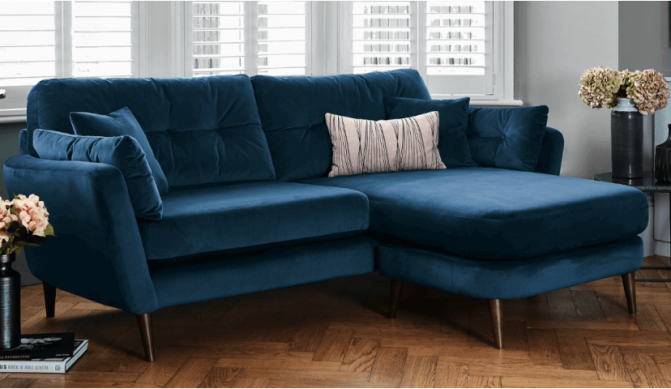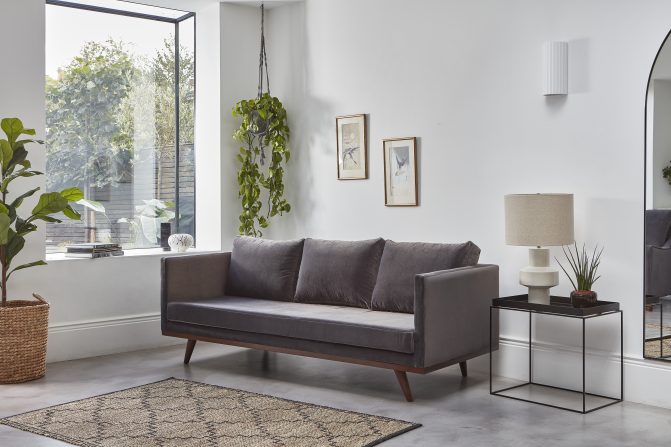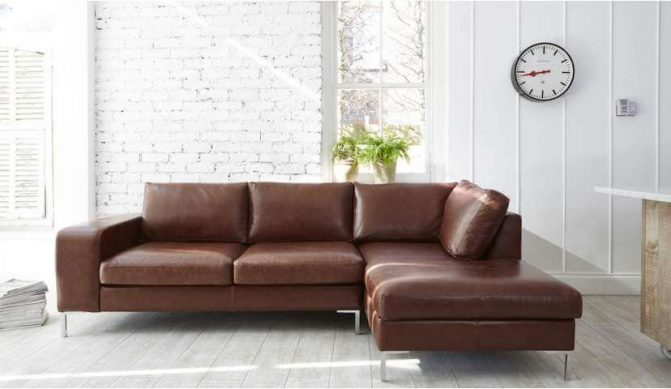Why are Millennials So Obsessed with Interior Design?
Design trends come and go but one thing has always remained constant – the desire to make a house a home, it’s just how people do that that has changed. With the explosion of Instagram and Pinterest over the last decade, interior design is no longer a concept that seems beyond reach.
On the contrary, design has become a focal point, particularly for millennials, with this generational cohort the first to have really grown up in the digital age, where online shopping has become the norm and now a natural part of daily life. And given the increase in house prices in the last few decades (in which wages have sadly not risen relatively) a large percentage of millennials are not in a position to buy their own home. With the nickname ‘Generation Rent’, they instead have turned their attentions to making where they live a cosy, inviting space, and who can blame them?
Read on to find out why millennials are so obsessed with interior design, and perhaps take inspiration from their creative thinking and design ideas!
Who are Millennials?
While it is not fair to label everyone born in a certain era with the same personality traits and behaviours, generational cohorts have been developed because it is believed that when people are born has an impact on attitudes, general perceptions, values, and behaviours. The first generation to be defined as such are the Baby Boomers, who were born just after the war, from 1946 – 1964. Next up was Generation X, born between 1965-1980 and then come the Millennials, who were born between 1981 and 2000. Anyone born between 2001 and 2020 is classed as Generation Z.
When looking at the millennial generation, they were the first who could be defined as digital natives. From being able to Google for help with their homework to doing an online food shop and creating a Pinterest board for pretty much anything which interests them, millennials have embraced the web and all it offers.
Why are Millennials So Interested in Interior Design?
A lot of it has to do with ease of access. The rise of the internet gave birth to the influencer and brand collaborations and gave furniture companies and brands the opportunity to showcase their collection to an audience who would have previously had no access to it. You no longer need to travel to a showroom or call up to ask for a brochure. With a click of a button, you can see a wealth of information, without moving from your sofa. Consider all the life hacks available online – from how to fold a bedsheet to how to style a living room, influencers have cornered the market and inspired millennials to create an aesthetic that’s right for their home.

It’s not just about access to the internet. The global pandemic saw everyone spending a LOT more time staring at their own four walls, and a lot more time to think about what they could do to make it a nice environment to live in. From simple changes to complete overhauls, people (not just millennials) had time to consider how they wanted their home to look. And during the pandemic, statistics have shown that almost half of millennials felt supporting local, independent businesses was important, with a whopping 47% changing their shopping habits accordingly!
Millennial Furniture Trends
Millennials tend to focus on creating a cosy space regardless of whether they own their home or not – but what kind of furniture/aesthetic trends are millennials into?
Sustainability is Big
Research has shown that they are very conscious about where they spend their money. They don’t want to buy furniture that won’t last, and they absolutely don’t want to buy something that will contribute to landfill in a short space of time. Sustainability is important – where the product comes from, how it’s made and the journey it has taken to come into being. Brands are being rightfully held to account and their choices impact on buyers’ decisions.
Vintage is Popular
It’s not just new furniture – millennials are also drawn to vintage furniture. It’s all about creating the right blend, mixing modern with vintage, or new with second-hand, ultimately creating a design unique to their home. Mid-century modern design has seen a real resurgence in recent years, with its sleek lines ideal for an urban apartment. In addition, velvet furniture, which was incredibly popular in the 70s has once again moved into the limelight, bringing in a sense of decadence into a space without being over the top.

With people spending so much time at home in recent years, furniture having multiple uses has also become important. From sofas with storage to tables used for dining and working, millennials are interested in everything providing real value.
Biophilic
Biophilic design, which focuses on bringing the outdoors in, to enhance wellbeing, has also been integral to millennial interior design in recent years. From a simple house plant to natural materials such as wood and rattan, millennials are paying close attention to the natural environment, and where possible, reflecting that in their homes.
What is Grandmillennial Design?
Grandmillennial design is a trend in which the millennial generation takes traditional furniture and blends it with a more modern aesthetic. Forget minimalism – grandmillennial style embraces florals but doesn’t take it to the extreme – it’s all about breathing new life into a décor which is considered outdated. Once again, the likes of Instagram and Pinterest have given this style a platform on which to grow, with followers jumping on board and sharing their own versions of this eclectic design.
What is Future for Millennial Style?
Millennials have shown that they really care about where each piece of furniture they buy has come from. Sustainability is not going away, if anything, it is becoming ever important, and will play an even bigger role in the decision-making process. Whether it’s understanding the carbon footprint of a sofa, or understanding the processes undertaken in the making of a leather sofa, research underpins every decision and will be a key consideration before any investment is made.

In addition to sustainability, furniture which is multi-purpose yet cosy, will continue to be important. Second hand or vintage furniture will also feature highly, and as social media continues to evolve, so will this generation’s shopping habits.
Ultimately, the home environment will continue to play a pivotal role and with more and more access to brands and design ideas, millennials’ interest in interior design looks set to grow even more in the coming years.

